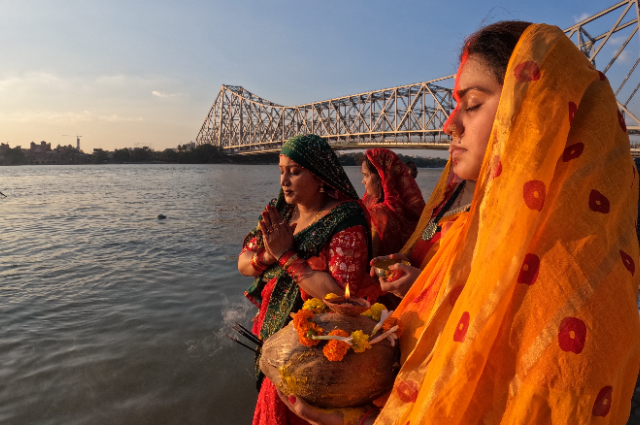
A festival that celebrates different forms of Sun: Chhath is a festival observed in the states of Bihar, Jharkhand, Uttar-Pradesh, and some of the parts of Madhya-Pradesh. It starts from the 4th day till the 7th day after Deepawali, in the month of Kartik. Chhath is not just a series of rituals; it is an emotion that intensely affects people. A four-day festival holds great cultural and spiritual significance among the people of north India, majorly in Bihar & Jharkhand. Chhath starts with Nahaye-khaye and ends on the 7th day after Deepawali with Usha-Arghya.
The Sun is considered a symbol of life and energy; Chhath is to thank the Sun God. Devotees ask Lord Surya to bless their family with good health and prosperity. It is a time when the entire family comes together and helps heal all the relationships. Chhath is not just a religious observation; it celebrates unity in diversity. Families and neighbors come together for the proper execution of the rituals. Chhath does not care which religion you belong to. Everyone can participate in Chhath, no matter what religion or caste they are from.
The festival starts from Nahaye Khaye, where the devotee prepares rice and gourd (Kaddu Bhaat), given as an offering (prasad) to all. It signifies the purification of mind and body. Then come Khrana on the second day. It is also known as Lohanda.
On this day, the devotee observes fast since morning. In the evening, after seeing the moon, they will break the fast. The devotees, themselves, will prepare kheer and puri and will offer them to God. It is believed that when they offer kheer and puri to God, there shouldn’t be noise around. The Sandhya Araghya is the third day when the devotee fasts the whole day. They prepare Thekua by singing folk songs. Just before dusk, everybody gathers at the riverbank. At dusk, they enter the river and offer everything they gathered.
This ritual is performed to express gratitude towards God. When they come out of the river, everybody is ready to touch the feet of the devotee. When the devotee changes their clothes, everybody fights for those clothes so that they get a chance to wash them. And then comes the last day, the Usha Araghya, the devotee returns to the riverbank the next morning. At dawn, they get into the river and again offer prayer to the rising sun.
Chhath Puja is a vibrant and spiritually enriching festival that shows the deep connection between nature and humanity. The rituals, fasting, and offerings symbolize reverence for the Sun God and gratitude for the life-sustaining energy provided by the sun. It preserves cultural traditions and promotes a sense of harmony and togetherness within communities.
